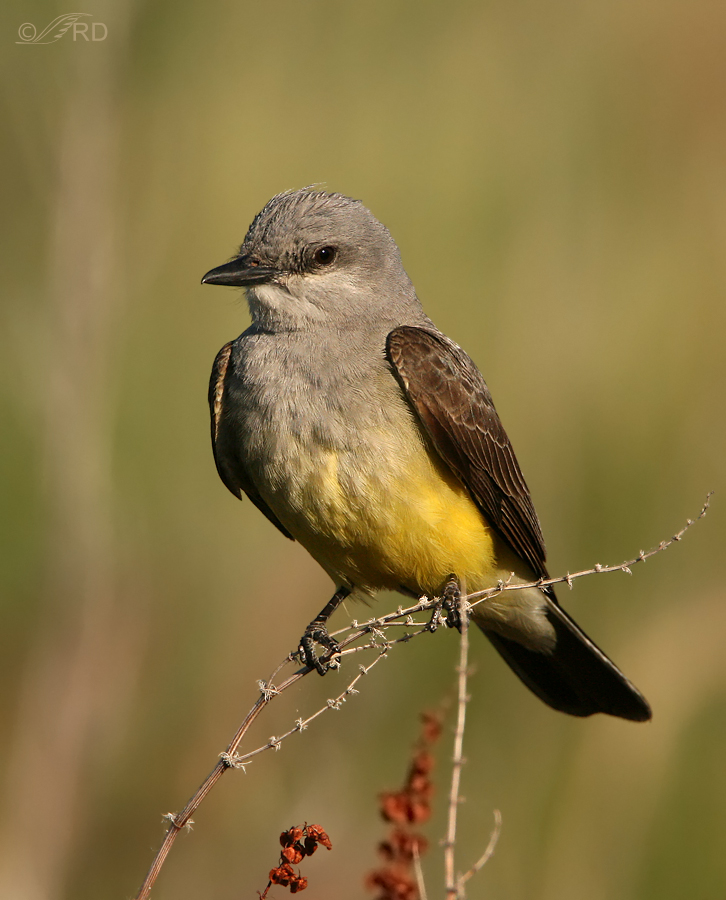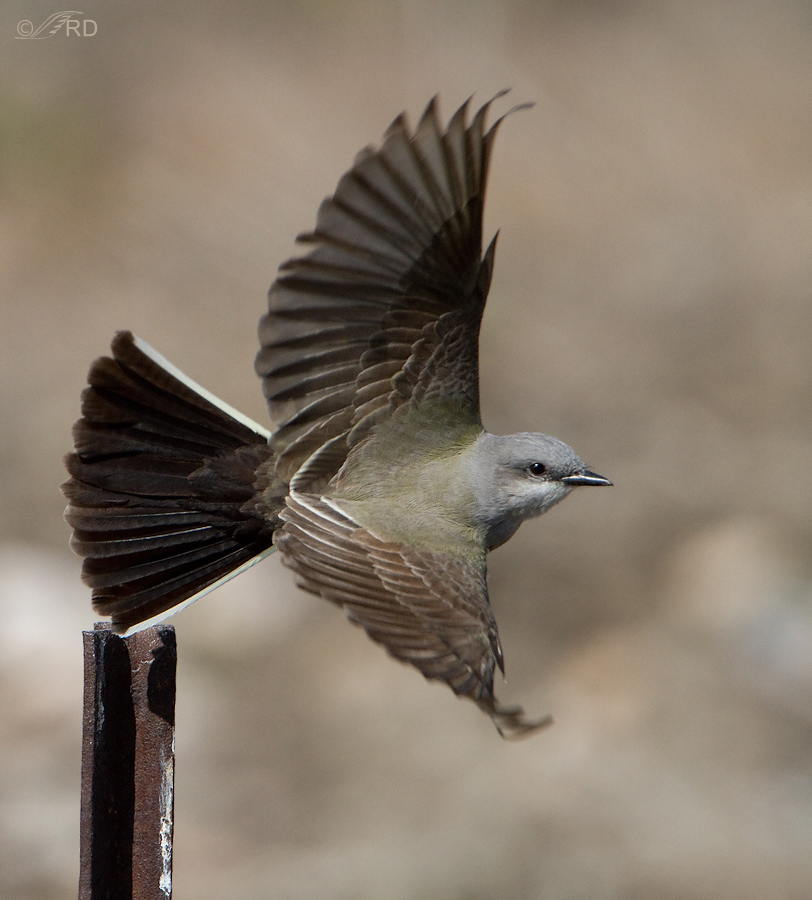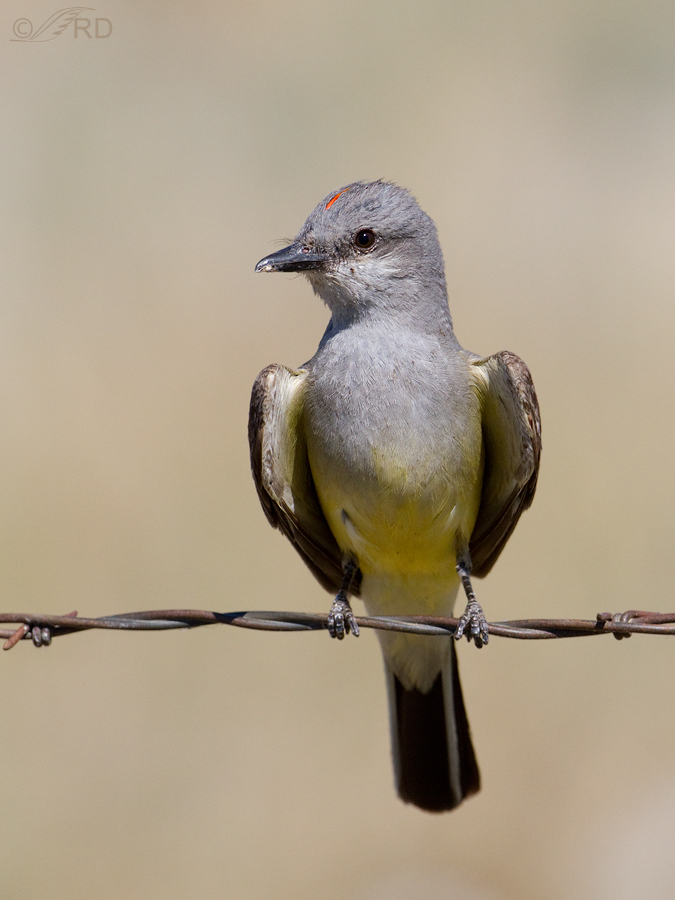Occasionally, even a mediocre shot can make my day.
I’ve known about the red/orange crown patch of the Western Kingbird for some time now but until yesterday had never seen or photographed it.

1/1600, f/8, ISO 400, 500 f/4, 1.4 tc
It normally lies concealed under the gray feathers on the top of the head and is rarely seen or photographed. Normally the crown patch is only revealed before or during an attack on another kingbird or a potential predator threatening its nest.
 1/2500, f/5.6, ISO 500, 500 f/4
1/2500, f/5.6, ISO 500, 500 f/4
The most common aggressive pose toward other kingbirds is called the wing flutter, where the wings are extended and rapidly fluttered in small arcs. But typically the crown patch is not exposed during a wing flutter unless an actual attack on the other kingbird is imminent.

1/2500, f/5.6, ISO 640, 500 f/4
I’ve included this image and the next one to show how well the crown patch is concealed. Here, as this kingbird ejects and throws off a pellet, you have a good look at the top of the head with no suggestion of a red crown patch beneath the overlying crown plumage.

1/3200, f/6.3, ISO 500, 500 f/4, 1.4 tc
And another kingbird, banking at takeoff, gives us a pretty good look at the top of the head with no hint of the patch.

1/3200, f/6.3, ISO 500, 500 f/4, 1.4 tc
But yesterday a gull made the mistake of landing on a perch very close to this kingbirds nest and it’s a huge understatement to say that the kingbird was unhappy about the situation. The feisty little kingbird repeatedly dived at the gull, often coming within a couple of inches of the gulls head. The action was fast and the kingbird was difficult to track in flight so I prefocused just above the gulls head and fired away whenever the kingbird came close. I only noticed the revealed crown patch when I got home and processed the images.
Bird behaviorists call this the “revealed crown patch” display. But there’s another related display called “raised, revealed crown patch”, where the bird first reveals the crown patch by parting the gray feathers on the head and then raises the red feathers of the crown patch through the parted area – sort of like a red mohawk haircut. This latter display is normally only made by the winner after a fight between kingbirds though it has also been documented when humans directly threaten their nest.
No, it’s not a great image and it has little to offer aesthetically. But I’ve always been fascinated by bird behaviors and I’m tickled pink (err… red) to get this documentary shot. I’ve always wanted to see the crown patch and now I’ve photographed it. Maybe one day I’ll get the crown patch “raised” (but I surely won’t harass the birds at the nest to get it).
Ron
Addendum – 7/9/12
Wouldn’t you know it?… On the very next day after this post about my first ever photograph of the Western Kingbird crown patch, I get another shot that shows the patch.

1/4000, f/6.3, ISO 500, 500 f/4
I found this bird on the road to Bear River MBR this morning. It flashed the patch several times to other kingbirds flying in the vicinity and I managed to get two shots that showed it partially revealed. Perhaps it’s not as unusual to see or photograph the patch as I thought it was but it’s sure been rare for me.
Ron


Great pictures Ron. I only just discovered this red crown on a western kingbird yesterday . I was watching a pair in my backyard and a house finch got a bit too close so it looked like the kingbird flashed the red crown to warn the finch to keep its distance . I’m glad you managed to get this captured with your camera.
Thanks
Colin
Thank you, Colin.
Thank you Ron, your documentation on the red crown patch could not be more timely. I saw the parted feathers, with a red patch beneath, on the crown of a Western Kingbird that is nesting in my rain gutter (visible from an upstairs window)for the first time today. As she perched on the edge of the gutter I thought maybe the eggs were hatching, so I lined up my camera and was stunned to see a wide red patch on the top of her head! At first I thought that she was injured. None of my reference books mentioned the red patch. Thank you for all of the good information regarding this.
Your images are beautiful!
Good, I’m glad this post was helpful to you Susan. I suspect that most folks aren’t aware that the crown patch exists.
Thank you Ron for solving the mystery for me of a bird I photographed chasing and hitting a Harris’s Hawk on the head. I have a photo of the bird riding the back of the hawk pulling the hawks neck feathers with its bill. One other shows the bird holding on to the tip of the hawks wing in flight. This was in Phoenix, Arizona yesterday. I had searched my apps and could find no mention ot the red on the head although I thought the bird looked like a Kingbird. The red crown patch appeared quite large.
WOW! What a great set of pictures. Congrats on your first Holy Grail!
Thank you Kathleen. One day I’d sure like to get the raised patch also.
Wow! You’ve found one of the holy grails of bird photography. Nice work!
Thanks Robert. My first holy grail 🙂
Yes!
The chit chat (or should I say chiffchaff?) is always so interesting, as most of the birds are unknown to me here in the UK. If you hadn’t explained I would have the thought the bird had a big head wound in the last photo – isn’t nature amazing!!
You’re right Ingrid – it does almost look like a head wound. Hadn’t thought of that.
The sequence of these photos, along with the last one, has really helped me understand the Western Kingbird.
oh wow!! fabulous photos, as usual!!! thanks again for taking the time and effort to bring these images to us!
Thank you Nicole.